On April 25, 2015, Nepal was struck by a catastrophic earthquake known as the Gorkha Earthquake, with a magnitude of 7.8Mw or 8.1Ms and a maximum Mercalli Intensity of X (Extreme). The epicenter was located in the Gorkha District, approximately 80 kilometers northwest of Kathmandu. Occurring at 11:56 Nepal Standard Time, the earthquake caused immense destruction, shaking the nation to its core. It claimed 8,962 lives, injured 21,952 people across Nepal, India, China, and Bangladesh, and left 3.5 million individuals homeless. This tragedy not only caused significant human loss but also severely impacted Nepal’s cultural heritage, economy, and infrastructure. Despite the devastation, the resilience of Nepal’s people and the unwavering support from global communities have driven remarkable recovery efforts.
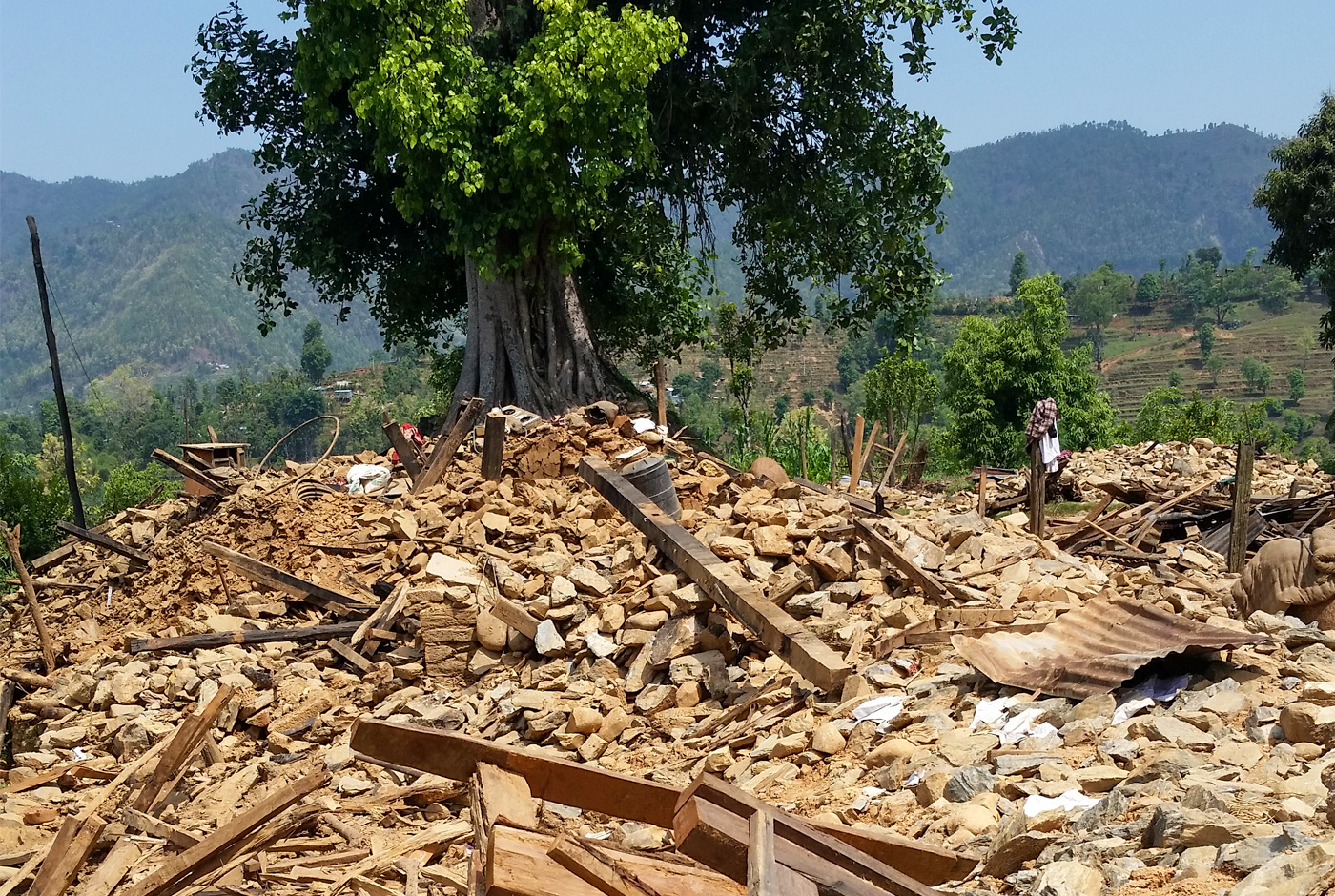
Impact and Devastation
In 2015, the earth quaked, and Nepal met an unexpected natural visitor that came without any warning, shaking the land of world highest peak, testing its spirit, and forever altering its story. The Gorkha earthquake left homes in ruins, lives shattered, and a nation searching for hope in the middle of the rubble.
Among 75 districts, 39 were affected mainly, whereas 8 were severely affected, including Dhading, Kathmandu, Bhaktapur, Gorkha, and Sindhupalchowk.
About 8,962 people lost their lives and more than 3.5 million people (one-eight of population) were displaced, with many compelled to live in temporary shelters like tents, hospitals, and makeshift shelters using plastic sheets and old clothes.
Out of Nepal’s 8 UNESCO World Heritage Sites, 3 suffered significant damage by shaky ground, including Kathmandu Durbar Square (Basantapur), Bhaktapur Durbar Square, and Swayambhunath Stupa (Monkey Temple). The iconic structure of Nepal, the Dahara, was demolished to rubble. Moreover, Nepal has experienced damage to over 100 hospitals, well over 1000 schools, bridges, and micro-hydro plants.
Among the four major regions of trekking, Annapurna, Everest, Manaslu, and Langtang, the Langtang region was one the hardest hit, with a large avalanche devastating the small villages of Langtang such as Chyamki, Mundu, Thangsyap, and Ghodatabela. Though not hit with heavy losses, Manaslu trekking route also faced severe destruction, particularly at the starting point of the route between Arughat Bazaar and Samagaun.
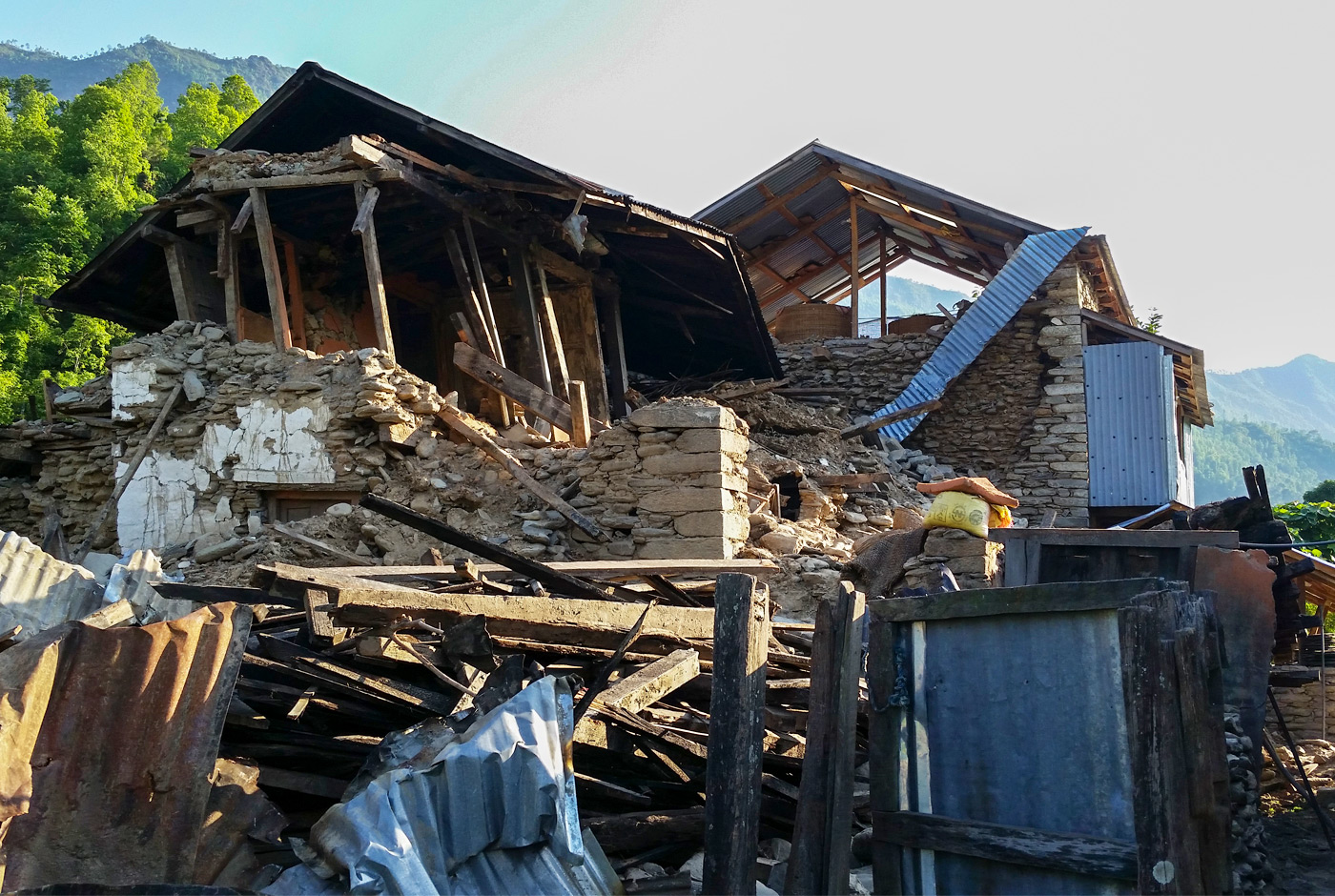
Recovery and Rebuilding Efforts
The recovery process in Nepal has been a collaborative effort involving local communities, government bodies, and international aid organizations.
In that chaos that followed, an immediate relief operation came like a breath of hope. Food to families, shelter, and care reached for the survivors, brought by helping hands – volunteer groups, rescue teams, NGOs, and strangers turned saviors at that time.
Reconstruction Efforts
Ten years have passed since the earth trembled Nepal to its core, and the journey of reconstructing, modernizing, and renovating has been one of determination and hope among Nepalese people.
- Villages once knocked down to stones and dust now stand proud with new homes, schools resonate with the laughter of children, and cultural heritage sites rise again with new faith, their stories well-looked-after in stone and wooden logs.
- Trekking paths in Langtang and Manaslu, once gashed by the quake, have been remodeled, welcoming travelers back again to their beauty.
- Most heritage sites, too, have found their lifeline as it has been restored, and the remaining ones are on their way to being restored, honoring their original beauty. In a few sites like Kathmandu Durbar Square, the careful work continues, preserving their historical integrity.
- Beyond Temples, stupas, and palaces, Daharahara or Bhimsen Stambha, one symbol of resilience, stands tall. It has already been inaugurated by the Prime Minister of Nepal, Mr. KP Sharma Oli, in 2021 on 24 April.
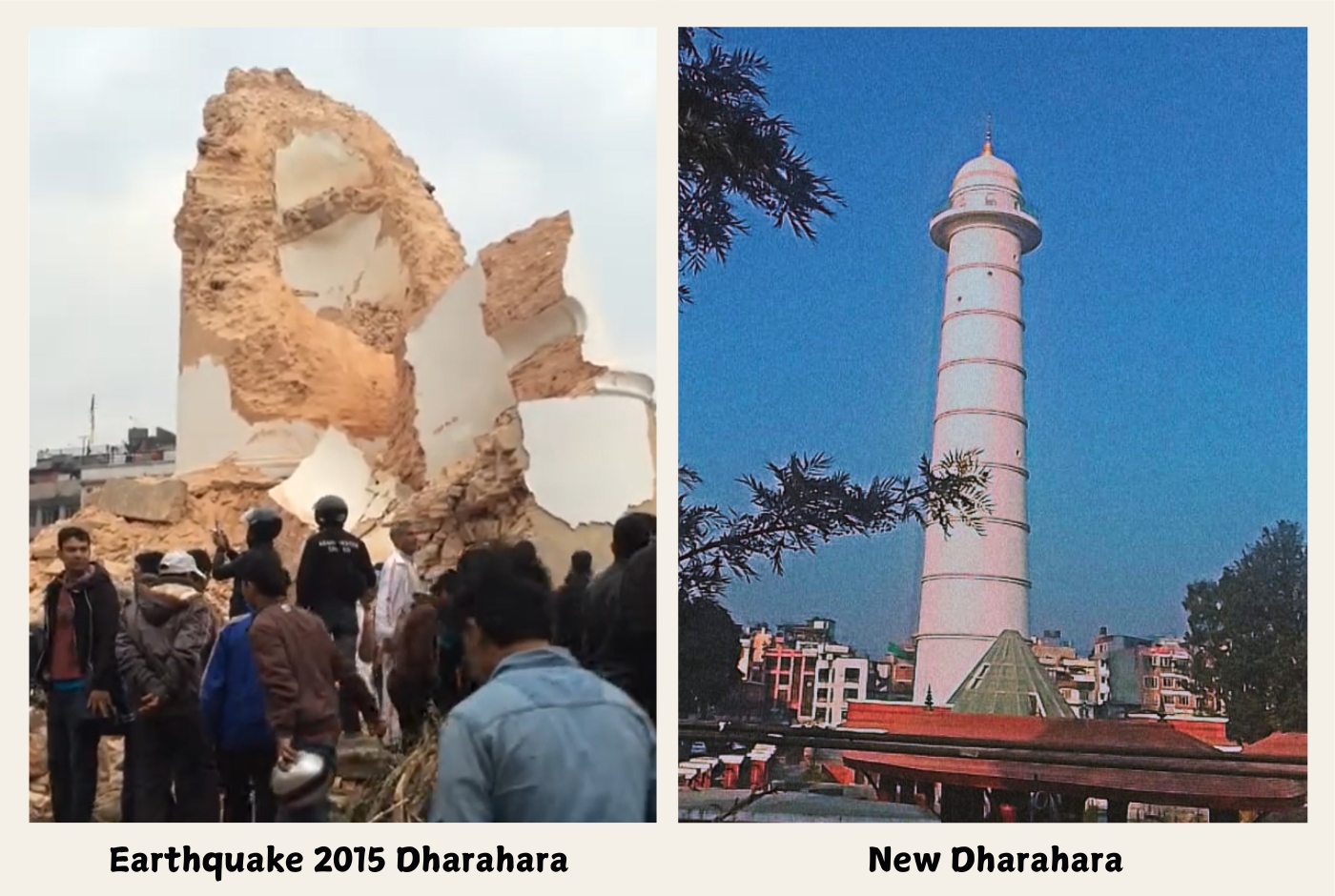
- We at Nepal Hiking Team couldn’t stand by as our country struggled to heal. With hearts full of determination and love, we stepped out to support schools in the countryside and provided materials to rebuild classrooms where children could learn and laugh again. It was more than just buildings; it was about bringing hope among the needed ones and normalcy back to communities, one brick at a time.
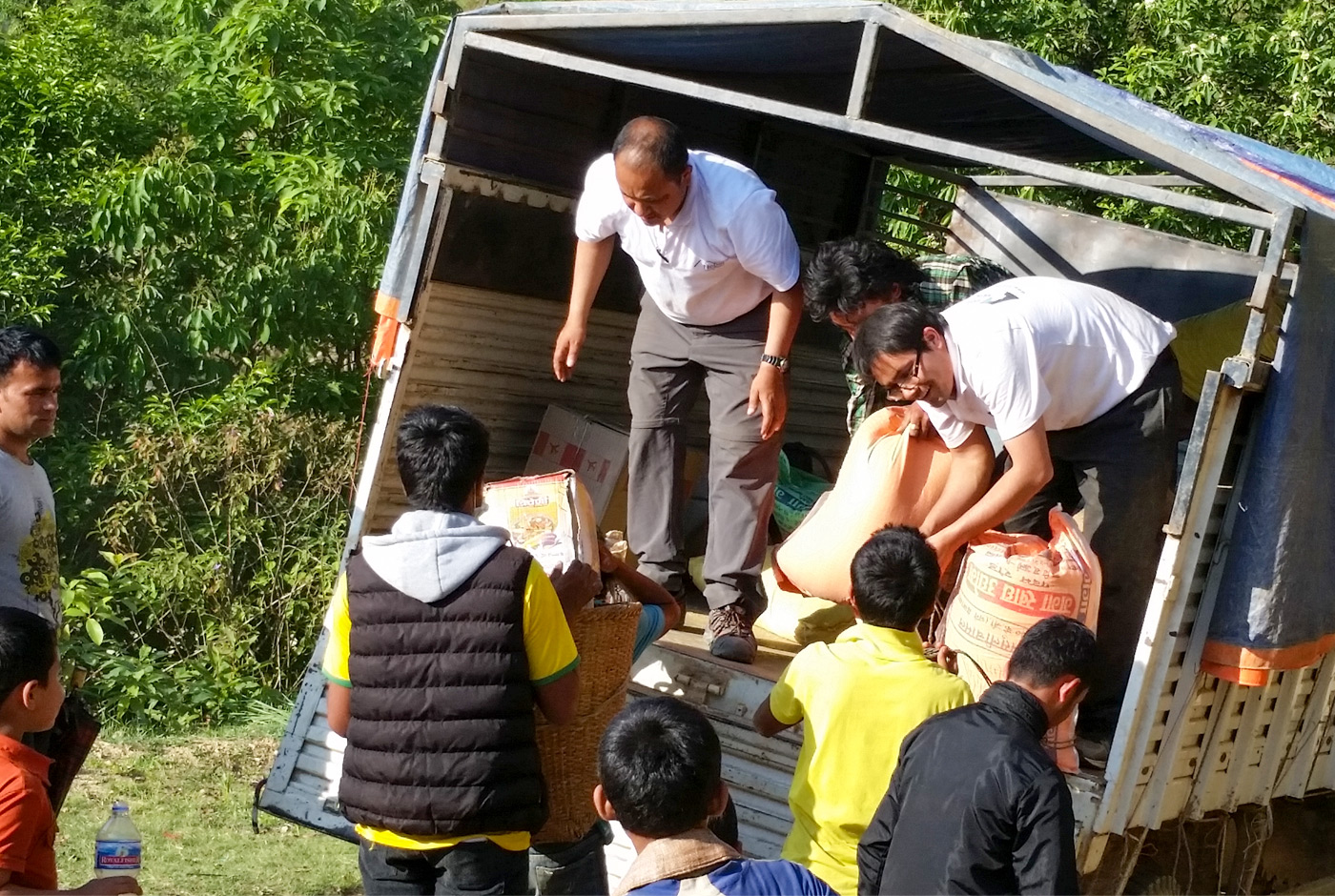
Safety of Travel in Nepal Post-Earthquake
Despite the devastation, Nepal's tourism sector quickly took its place, with many regions declared safe for traveling by late 2015, and the nation’s soul of hospitality was ready to welcome visitors once again.
Popular regions like Annapurna Region, Mustang Region and Everest Region were declared as post-earthquake safe trekking areas, standing as pillars of Nepal tourism. The devastating tremor destroyed two of the main trekking routes of Nepal: Langtang Valley Trek and Manaslu region trek. Today, these fabulous routes are open once again. They are ready to welcome trekkers from around the world.
National and international airports remained fully operational, and the authority, alongside the tourism industry, worked tirelessly to restore confidence in Nepal as a travel destination. Today, tourists are welcome to explore the country's natural beauty plus witness a nation that has risen stronger, carrying the weight of a heartbreaking past and the pride that doesn’t break, no matter the challenges.
Role of Nepal Hiking Team (NHT)
Nepal Hiking Team played a pivotal role in supporting recovery efforts, both for its staff and the broader community.
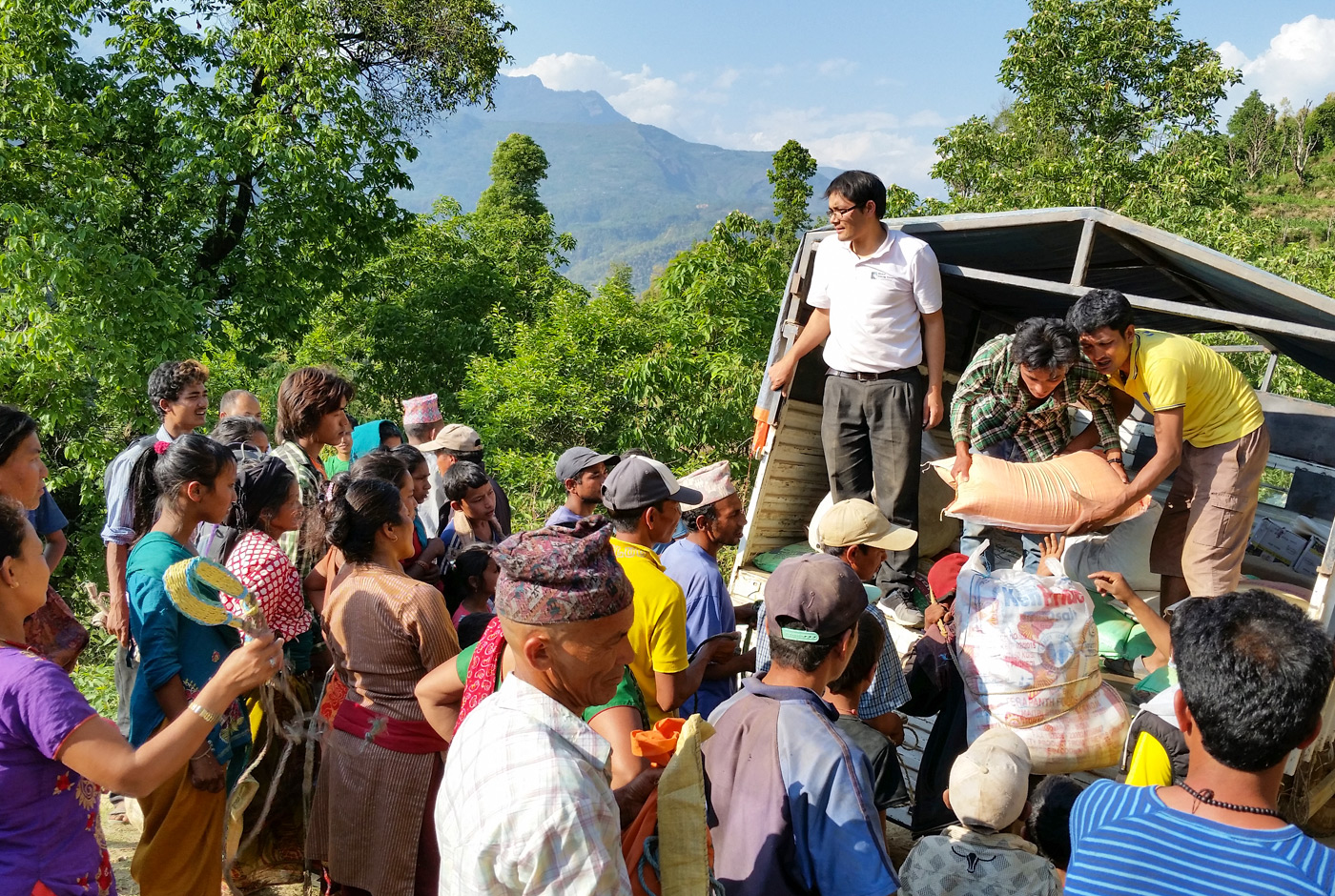
Nepal Hiking Team stood at the forefront of recovery efforts after the earthquake, extending its care to our staff and also to the broader community.
The “Guides and Porters Earthquake Relief Fund Distribution Program” raised $51,920 on June 5, 2015, to support affected team members and their families. In Jyamrung-1, Dhading, NHT delivered food, tents, and supplies to 40 families, offering immediate relief.
In rural areas, NHT contributed to rebuilding schools, ensuring children could return to their classrooms and communities could regain a sense of stability. Beyond this, NHT’s unwavering support for its staff—guides, porters, and indoor team members—showcased its commitment as a compassionate and responsible employer. Through these efforts, Nepal Hiking Team played a pivotal role in developing resilience and hope during one of Nepal’s darkest chapters.
Ongoing Contributions
Our efforts haven’t stopped after the immediate relief; we continue to support our staff and their families throughout subsequent recovery phases as a pillar. We, NEPAL HIKING TEAM, have also played an active role in reopening trekking routes making sure a safe operation for both staff and travelers; that’s what makes us a trusted and reliable company in Nepal.
Frequently Asked Questions (FAQs)
When was the last time Nepal had an earthquake?
It was 10 years ago, on April 25, 2015 (Baisakh 12, 2072 B.S.), a Saturday morning at around 11:56 A.M. local time. The earthquake had a magnitude of 7.8 on the Richter scale. The Baisakh earthquake was one of the most devastating earthquakes in the country's history after 1990.
How badly was Nepal affected by the 2015 earthquake?
Nepal experienced significant devastation during the earthquake, with 8,962 lives lost and millions left homeless. Entire villages were destroyed, and critical heritage sites in Kathmandu (capital city) and Bhaktapur were heavily damaged. However, the country has since rebuilt most of its infrastructure and resumed normal life.
Are trekking routes safe now in Nepal?
Yes, trekking routes are fully operational and safe. The Annapurna, Everest, and Mustang regions were minimally affected. Langtang and Manaslu, which initially faced severe destruction, have been restored and are now accessible for trekking.
Which cultural heritage sites were damaged in the earthquake?
Three UNESCO World Heritage Sites—Kathmandu Durbar Square, Bhaktapur Durbar Square, and Swayambhunath Stupa—suffered major damage. While most have been restored, a few structures in Kathmandu Valley are still undergoing careful reconstruction to maintain their historical authenticity.
Does 2015 earthquake cause an avalanche on Mount Everest?
Yes, the 2015 earthquake struck Nepal and triggered a massive avalanche on Mount Everest, sweeping through Everest Base Camp. It was one of the deadliest disasters in Everest's history.
Which districts were hit by the 2015 Nepal earthquake?
The earthquake that occurred in 2015 severely impacted districts like Gorkha, Sindhupalchowk, Kathmandu, Dolakha, Nuwakot, Rasuwa, Dhading, Lalitpur, Bhaktapur, and Kavrepalanchok, among others.
How many people died in the 2015 Nepal earthquake?
The Gorkha earthquake in Nepal claimed around 9,000 people were killed, and left nearly 20,000+ injured. Families were torn apart, villages turned to dust, and dreams buried under rubble. Just weeks later, another quake struck, deepening the scars.
How has Nepal recovered since the earthquake?
Nepal has made remarkable progress in recovery. Homes, schools, trekking routes, and most cultural heritage sites have been rebuilt. Communities have adapted to better disaster preparedness, and tourism has bounced back as a cornerstone of the economy.
Is Nepal safe to travel to now after the Earthquake?
Yes, Nepal is entirely safe for travelers. By late 2015, most trekking routes were declared safe to travel. Now, infrastructure, trekking routes, and tourism facilities have been restored, and the country welcomes visitors with open arms. Travelers can now explore Nepal’s natural beauty and cultural richness while witnessing its incredible recovery journey.
Tourism remains a cornerstone of Nepal’s economy and recovery. By visiting Nepal, you can experience its breathtaking beauty and warm hospitality while witnessing its journey of resilience and hope.
Conclusion
The 2015 earthquake was a tragic chapter in Nepal’s history, but it also showcased the strength, unity, and resilience of its people. With most of its heritage and trekking routes restored, Nepal continues to rise from the rubble. Visiting Nepal today offers a unique opportunity to witness its recovery and contribute to its enduring legacy.



